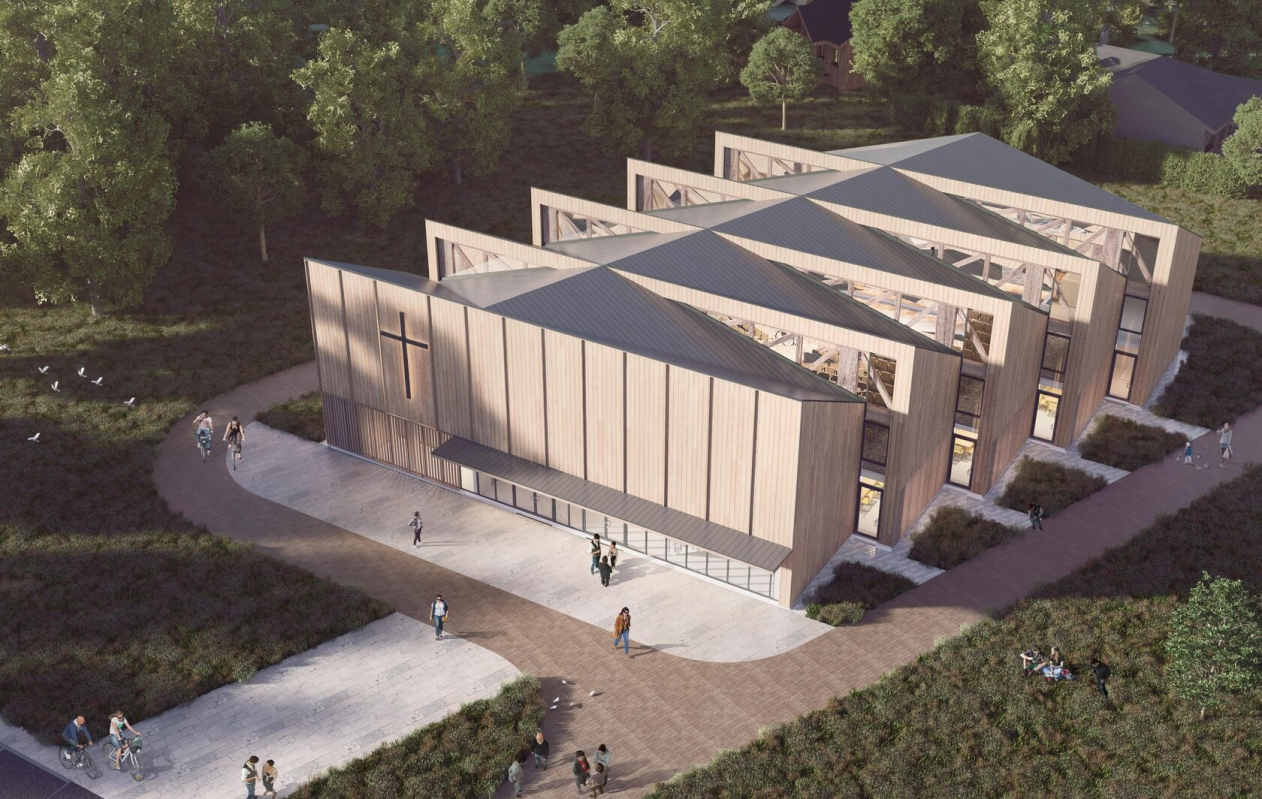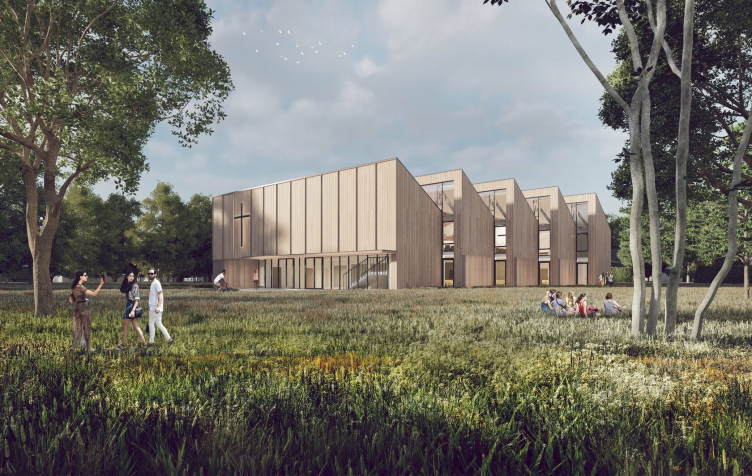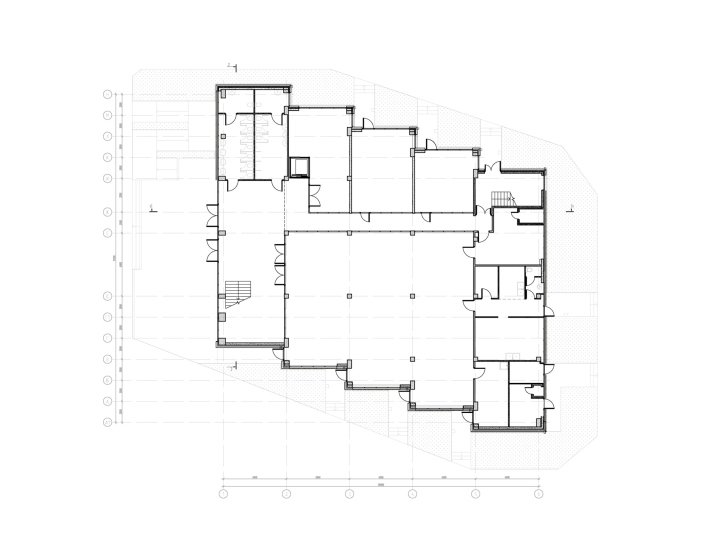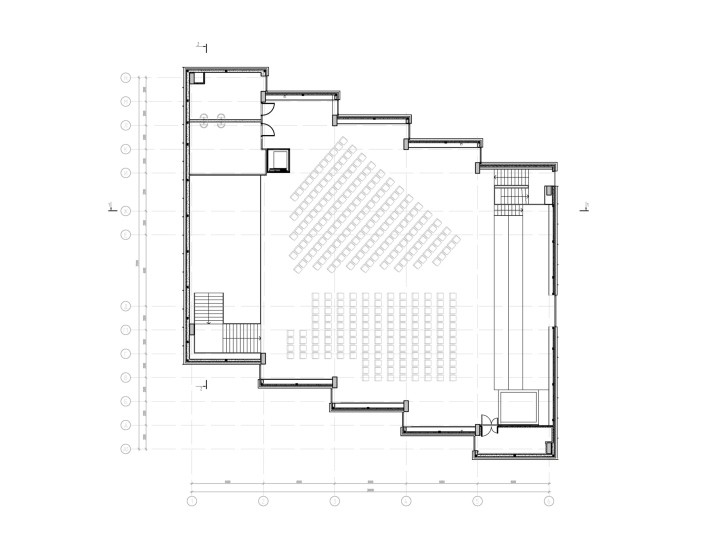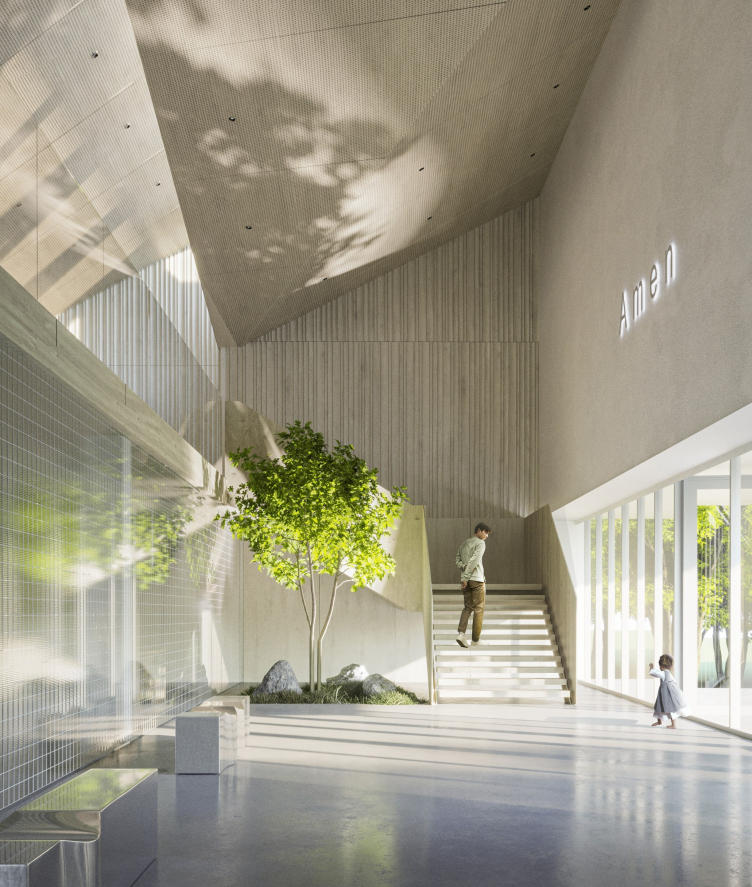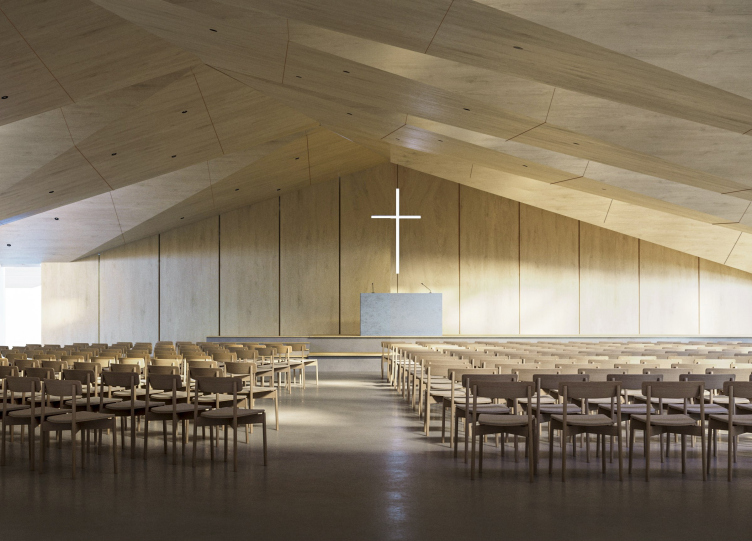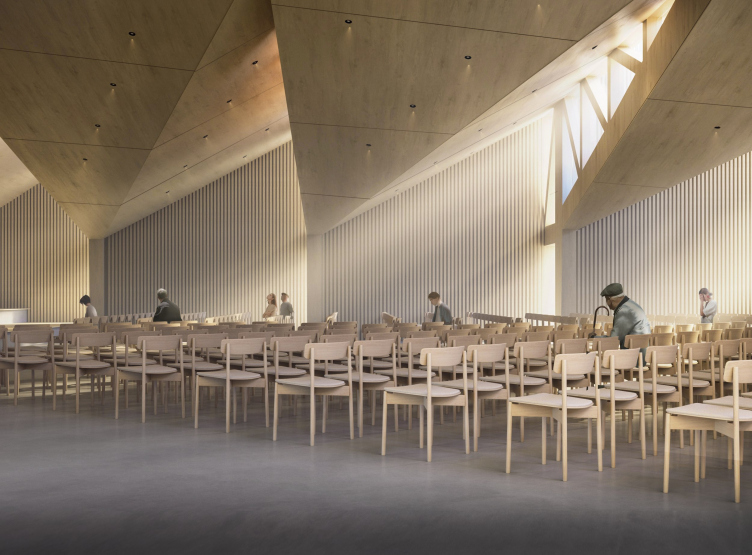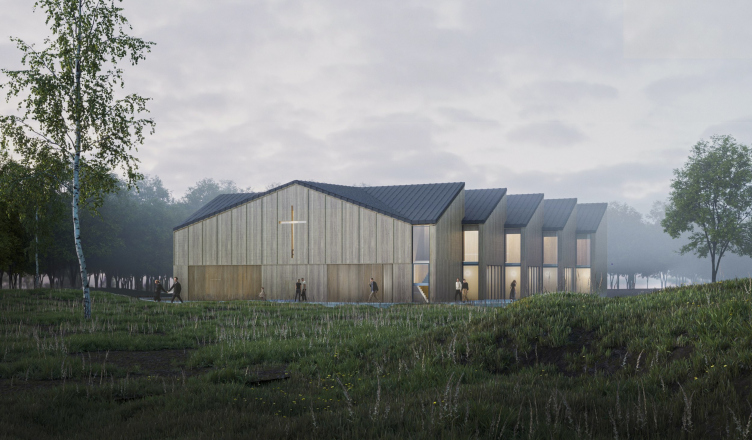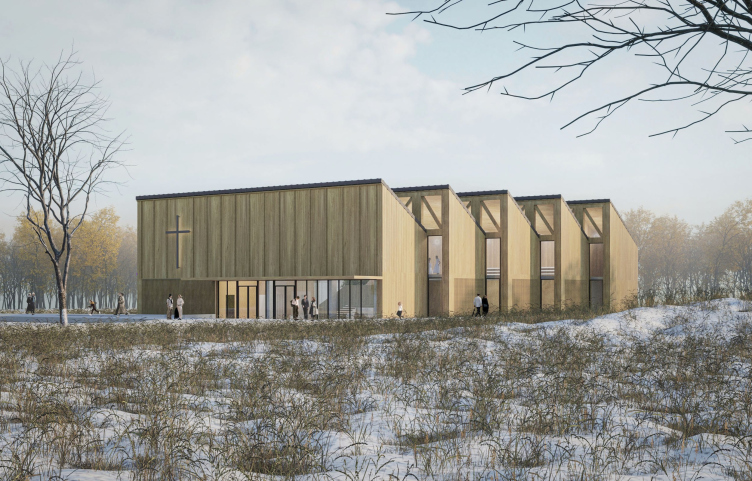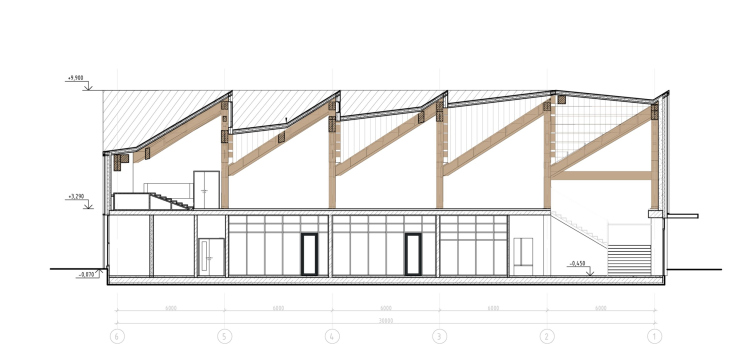The temple is already being built on the site of the house at 5 Baikalskaya Street, near the Pargolovo station, amongst ordinary dacha land plots. Nearby is the Orthodox wooden church of St. Joasaph of Belgorod, built on the site of a building lost back in 1938.
Apostolic Christian Church
Copyright: © SLOI Architects
Apostolic Christian Church
Copyright: © SLOI Architects
The Protestant church abandoned intricate architectural symbolism in favor of simplicity, accessibility, and functionality, yet it maintains its traditions linked to its basic doctrine. The church is intentionally design to resemble an ordinary house, devoid of decorative elements and any hierarchy for the worshippers. The focus is on the preacher’s pulpit, and light becomes the primary means of expression. All of this is reflected in the concept of SLOI architects.
Valentin Kogan
In this project, we presented the building as an independent metric of space. This, in our opinion, is in line with the spirit of Protestantism, where the daily life of a person is structured rigorously enough, and prescribes significant self-organization of the individual.
The temple is a group of five identical two-story volumes, interlocked with a slight offset in the plan. As a rational urban planning technique, this solution helps to sufficiently accommodate the spaces required for the church on the land plot formed at an angle to the street. Each block has a four-pitched roof with a hidden drain, which together with the equal offset in the plan creates a rhythmic silhouette.
The temple is a group of five identical two-story volumes, interlocked with a slight offset in the plan. As a rational urban planning technique, this solution helps to sufficiently accommodate the spaces required for the church on the land plot formed at an angle to the street. Each block has a four-pitched roof with a hidden drain, which together with the equal offset in the plan creates a rhythmic silhouette.
Apostolic Christian Church
Copyright: © SLOI Architects
The five blocks of the building correspond to the five doctrines of Protestantism. Special attention is given to the ritual of baptism, with several rooms on the ground floor designated for baptisteries. Other spaces in the building can be used for various events and serving one another: holidays, weddings, concerts, and lectures, as well as creative activities for children and adults.
Apostolic Christian Church
Copyright: © SLOI Architects
The prayer hall is situated on the second floor. The noteworthy feature is the roof structure made of laminated timber: a complex system of frames and slopes with 25-meter spans.
Apostolic Christian Church
Copyright: © SLOI Architects
The interior of this structure is covered by a wooden panel ceiling resembling a tent canvas, alluding to the tabernacle of heaven and earth. As for the vertical frames made of CLT panels, they are left open to let more natural light in. The pulpit, located in the center of the hall, is accentuated by a cross cut into the wall, illuminated by sunlight.
Apostolic Christian Church
Copyright: © SLOI Architects
Apostolic Christian Church
Copyright: © SLOI Architects
Considering the absence of strict canons, it can be said that Pargolovo will soon have its regional variant of Protestant architecture. From the pulpit side, where one can observe the most complete fragment of the four-sided roof, the building resembles traditional wooden architecture. The repetition of the volume in perspective creates an effect of fractal similarity or reflection in two mirrors, which can be seen as a metaphor for the continuity of time. On the outer side, however, what we see is a modern building with a “ridge and valley” roof in the spirit of modernism, entirely made of wood – a worthy reason to visit Pargolovo.
Apostolic Christian Church
Copyright: © SLOI Architects
Apostolic Christian Church
Copyright: © SLOI Architects
Apostolic Christian Church. Section 1-1
Copyright: © SLOI Architects
Apostolic Christian Church. Section 2-2
Copyright: © SLOI Architects

